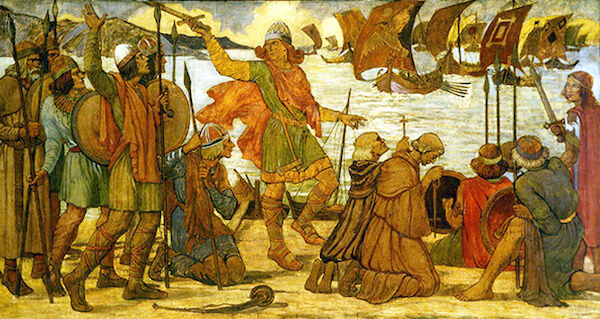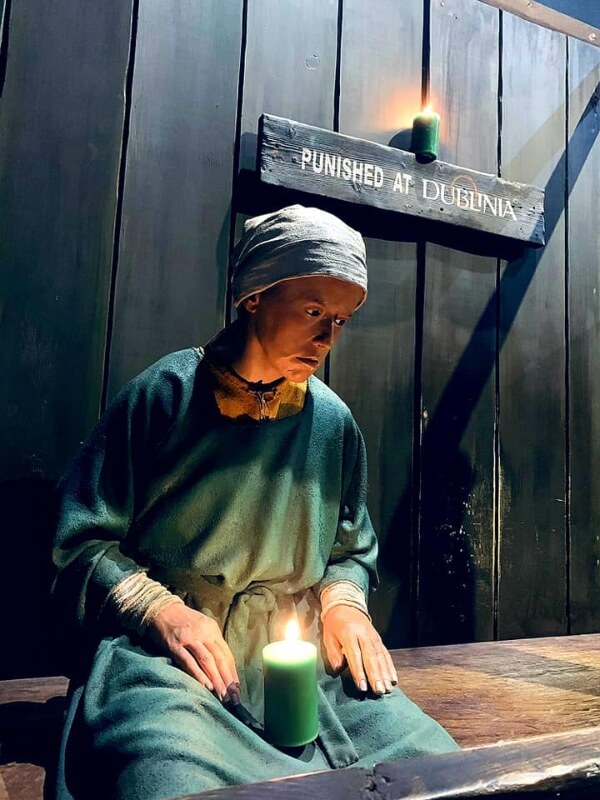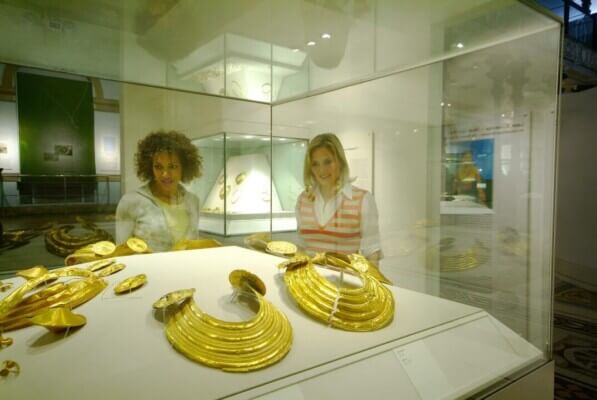Updated October 2021–The remains of a Viking skeleton discovered in Dublin in 2020 was an exciting development for archaeologists who had been working at the city center site for six months.
This news page contains affiliate links and I may earn compensation when you click on the links at no additional cost to you.
The 9th– or 10th-century Viking skeleton discovered in Dublin was recovered during an excavation near Dublin Castle where in ancient times the River Poddle flowed into Dubh Linn near the River Liffey.

The River Poddle supplied fresh drinking water to the Viking community and filled the moat of Dublin Castle.
The skeleton was amazingly intact and is believed to be a male child aged between 10 and 12.
Researchers believe that the child was wrapped in a shroud and thrown into the river.
Its shoulders were hunched together, and an iron buckle or fastener was found with the body.
Researchers at the site believe that the child may have been killed.
Further tests, to be conducted at a later date, will determine the date of death, the definite gender of the skeleton, and its ethnic origin.

The archaeological dig, which was conducted on the site of a commerical property on Ship Street, has confirmed to archaeologists that the Viking settlement known as “Dubh Linn” was much larger than originally believed, extending beyond the walls of Dublin Castle.
Excavations, which are being conducted by Archaeological Projects Ltd., and a team from University College Dublin, have already made some fascinating discoveries.
They include the uncovering of Ireland’s oldest prison cells, which were part of an old Dublin Metropolitan police station on the city’s Chancery Lane, as well as the remains of a man in a punishment burial site.

The man’s feet and hands were cut off, the likely punishment for insulting a lord, archaeologists suggested.
A medieval farm was also discovered nearby.
The archaeologists have also uncovered banks that would have run along the River Poddle and the Dubh Linn Viking community, with gaps to bring in boats.
Researchers also now believe that the Vikings continued to live at Dubh Linn even after the Wood Quay settlement was established a kilometer away.
The Vikings in Dublin
The Vikings landed in Dublin in the 9th century and for almost three centuries, they ruled the city with an iron fist before being defeated in 1014 by the Irish High King Brian Boru at the Battle of Clontarf.

The following tourism attractions will give you a real insight into the depth of the Viking influence in Dublin.
Dublinia
If you want to learn about Dublin’s Viking and medieval roots, you should check out Dublinia, an interpretive exhibition located in Synod Hall that aims to replicate life in the city over 1,000 years ago.
The attraction is located beside Christchurch Cathedral, the oldest functioning building in the city.

Get a feel for the Viking way of life by learning the skills of a Viking warrior. You can even try on Viking clothes, become a slave, and stroll down a noisy street.
In medieval Dublin, experience the sights, sounds, and smells of the crowded city.

View some of the artifacts that were found during the excavations and immerse yourself in an audio-visual experience that will take you on one man’s life journey.
Get Wifi in Ireland with Wifi Candy – take 10% off with code irelandonabudget
The National Museum of Ireland Archaeology
This great museum is home to a unique exhibition called “Viking Ireland.” It documents the history of the Vikings in Ireland from about 800 A.D. through 1150, representing the finest collection of artifacts in Europe from the period.

The free exhibition includes swords, jewelry, toys, board games, and wooden boxes, all of them discovered during the excavation of Wood Quay.
You can see the exhibit virtually here.
Dubh Linn Gardens at Dublin Castle
The Dubh Linn Gardens is on or near the site of the original Dubh Linn settlement, where the Vikings created a sheltered harbor for their ships.

https://creativecommons.org/licenses/by-sa/2.0/
It is designed in the style of ancient Celtic jewelry. Be sure to visit the gardens when you’ve completed your tour of Dublin Castle.

